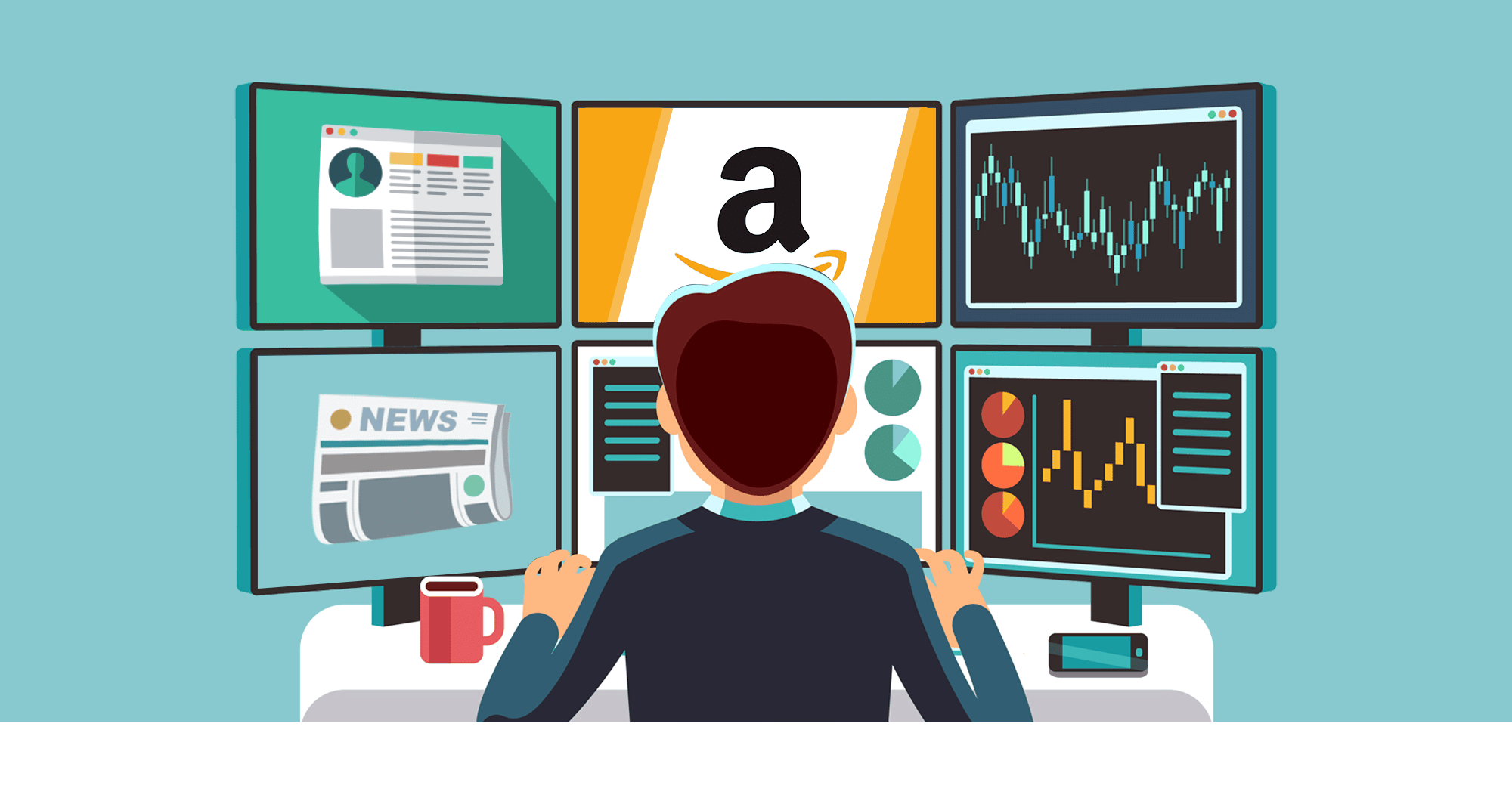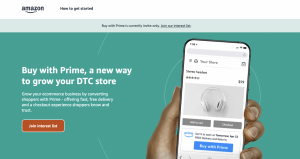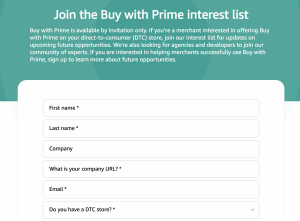
Despite all allegations of monopolistic practices against Amazon, the ecommerce giant is not slowing down when it comes to building its online empire. It recently rolled out Buy with Prime, a feature that allows customers to avail of the benefits of Prime delivery even outside Amazon.
How Does Buy with Prime Work?
Buy with Prime, as the name suggests, allows businesses to add a “Buy with Prime” button in their own direct-to-consumer (DTC) websites. So whether your off-Amazon store is on Shopify or anywhere else, you can add the button by simply using a string of codes.
When buyers visit your ecommerce site, they will have the option to check out items just like they would in any Amazon product listing. Buyers will be prompted to log in to their Amazon accounts where their information is stored (e.g., name, address, contact details), making checkout easier. The processing and shipping will then be just like any other Prime order. Customers can expect free shipping, next-day delivery, and free returns, if applicable.
Amazon says adding the buy with Prime button is easy and involves only four steps. But of course, it won’t just be those four steps for every seller. If, for example, you’re not using Amazon Pay on your site yet, you’ll have to register before you can add the Buy with Prime button.
Who Can Use Buy with Prime?
As of writing, Buy with Prime is invitation-only, with Amazon offering it to select FBA sellers. However, as it rolls out through 2022, more merchants will be invited, including those who are not selling on Amazon.
Business owners who are interested in adding the Buy with Prime button can sign up using Amazon’s Interest List to get notified when it opens up to more sellers.
As for customers, the feature is currently available only to US-based Prime members.
How Much Will Buy with Prime Cost?
Buy with Prime has no upfront costs. Merchants pay as they use the feature, so all costs (except storage fees) will be charged only after a sale is made. However, the cost per unit is not disclosed. The seller will get to know the details only after he or she is invited to the program.
The price per unit will depend on different factors, including
- Product dimensions and weight
- Average selling price
- Number of units per order
However, on a good note, Amazon did clarify that those who sell on Amazon.com are “not required to have price and selection parity with their Amazon listings.”
How Buy with Prime Can Affect Third-Party Sellers
At first glance, this seems to be a win for third-party sellers. However, as with any program, there are both pros and cons.
Pros of Buy with Prime
- Reduced friction upon checkout. Buyers don’t have to manually enter their information. All they need to do is log in to their Amazon accounts, and all their details are there.
- No competitors on the page. On Amazon, customers can see similar products from other sellers. This is not the case when they’re on your DTC site.
- More Prime members. Because this is also very appealing to customers, this can encourage more people to sign up for Prime, even those who don’t usually shop on Amazon. It isn’t a direct or guaranteed benefit, but it means more potential customers.
Cons of Buy with Amazon
- FBA fee increases. When Amazon’s PPC became more popular, the rates were increased and the first page of the search results were flooded with sponsored content that sellers have little to no choice but to pay in order to rank. The same can happen with FBA fees, which means more costs on top of the recent fuel and inflation surcharge.
- Potential stock limits. Remember last year’s massive cuts in stock limits? If enough merchants will sign up for FBA because of Buy with Amazon, the company may have to adjust limits again.
- A lot of unclear factors. Will sales made off-Amazon affect seller metrics and rankings? There are still a lot of unanswered questions that sellers may not have the answers to unless they’re invited to the program.
Is Buy with Prime the Shopify Killer?
A lot of people see this new Amazon feature as an attack on Shopify. However, we have yet to see how successful it will be. Despite Amazon’s successes, not everything it touches turns to gold. Buy with Prime can die a natural death, just like Amazon Stores did. Note that that was also an attack against Shopify, offering sellers to create their own ecommerce stores.
However, we can be sure of one thing: Amazon is expanding its influence, and it’s expanding fast. Buy with Prime has the potential to involve Amazon in every online store’s checkout. Through this feature, the Everything Store can inject itself into other ecommerce sites. We’re expecting another government probe on this in the future.
On the other hand, Shopify is strengthening its fulfillment game. It recently partnered with Shippo and plans on purchasing Deliverr.
So while Buy with Prime is seen as a threat to Shopify, the latter is also doing its best to beat FBA.







How is this different from our existing “Buy on Amazon” button shown on our DTC website listing? You encouraged that a while back to drive better Amazon rank so we added it to our site.
I guess the difference is that the payment is still done on the DTC website (and not on Amazon platform) ? Maybe the process is seemless and the “Buy with prime” button is just a payment option (as it would be for Klarna or Alma payment method )